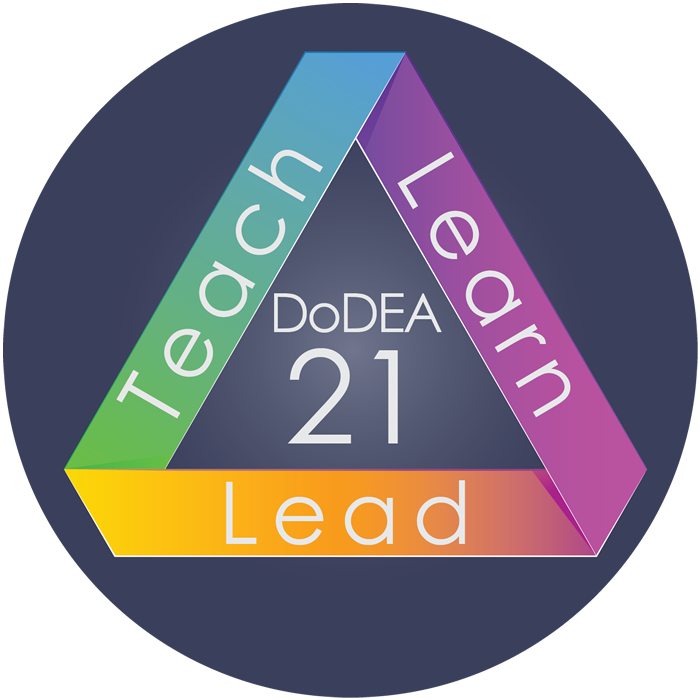Instructional Leadership Role, Competencies, and Indicators
Definition of the Role:
The instructional leader ensures a student-centered school environment that provides and nurtures innovative learning experiences for all students to prepare them for success in life and empower all staff, parents, and students to collaboratively and deliberately use data to support every student's academic, social, and emotional growth.
I.1) The effective 21st century school leader guides, monitors and supervises effective curriculum integration and innovative application of instruction and assessment through teaching, learning, and leading
Standards
(ISLLC 2B, 2D, 2E)
Standard 2
An education leader promotes the success of every student by advocating, nurturing, and sustaining a school culture and instructional program conducive to student learning and staff professional growth.
Functions:
B. Create a comprehensive, rigorous, and coherent curricular program
D. Supervise instruction
E. Develop assessment and accountability systems to monitor student progress
(NETS-A: 2A)
2. Digital Age Learning Culture
Educational Administrators create, promote, and sustain a dynamic, digital-age learning culture that provides a rigorous, relevant, and engaging education for all students.
a. Ensure instructional innovation focused on continuous improvement of digital-age learning
(MAPA: 1.3, 1.4, 1.5, 3.1)
GOAL 1. STUDENT ACHIEVEMENT
Student Achievement: The administrator works with the school community to review data from multiple sources to monitor progress and foster continuous growth of all students under the DoDEA Community Strategic Plan and following the adopted curricular standards.
1.3 Understands student requirements and academic standards
1.4 Observes instructional practices to ensure effective delivery of instruction
1.5 Personal participation in leading professional development focused on improving student achievement
a) Provides conceptual guidance for teachers regarding effective classroom practice
b) Assists in aligning instruction with the following internal and external factors: DoDEA CSP, school level CSI, AdvancED Standards, CCSS (Common Core State Standards)
I.2). The effective 21st century school leader models digital tools to support teaching, learning, and leading
Standards
(NETS-A 2B, 4A)
2. Digital Age Learning Culture
Educational Administrators create, promote, and sustain a dynamic, digital-age learning culture that provides a rigorous, relevant, and engaging education for all students.
b. Model and promote the frequent and effective use of technology for learning
4. Systemic Improvement
Educational Administrators provide digital age leadership and management to continuously improve the organization through the effective use of information and technology resources.
a. Lead purposeful change to maximize the achievement of learning goals through the appropriate use of technology and media-rich resources
a) Models and promotes the frequent and effective use of technology for learning
I.3) The effective 21st century school leader provides deliberate, purposeful, and collaborative opportunities for professional learning in an environment where risk taking is valued
Standards
(ISLLC 2F, 2I)
Standard 2
An education leader promotes the success of every student by advocating, nurturing, and sustaining a school culture and instructional program conducive to student learning and staff professional growth.
Functions:
F. Develop the instructional and leadership capacity of staff
I. Monitor and evaluate the impact of the instructional program
(NETS-A 3.D)
3. Excellence in Professional Practice
Educational Administrators promote an environment of professional learning and innovation that empowers educators to enhance student learning through the infusion of contemporary technologies and digital resources.
d. Stay abreast of educational research and emerging trends regarding effective use of technology and encourage evaluation of new technologies for their potential to improve student learning
(MAPA: 3.1)
GOAL 3. CONTINUOUS PROFESSIONAL DEVELOPMENT
Continuous Professional Development. The administrator engages the educational community, faculty, and staff in planning and implementing professional development activities that promote both individual and organizational growth and lead to improved teaching and learning.
3.1 Provides formal and informal feedback to staff or colleagues with the exclusive purpose of improving individual and organizational performance
a) Systematically engages staff in implementation of research based strategies for Curriculum, Instruction, and Assessment
b) Continually exposes the staff to cutting edge ideas and the effective use of current instructional research
c) Provides authentic, job embedded professional learning opportunities
d) Monitors and evaluated the effectiveness of the instructional programs
I.4) The effective 21st century school leader establishes a student-centered shared leadership learning environment promoting interaction and a sense of community
Standards
(ISLLC 2A, 2C, 2H)
Standard 2
An education leader promotes the success of every student by advocating, nurturing, and sustaining a school culture and instructional program conducive to student learning and staff professional growth.
Functions:
A. Nurture and sustain a culture of collaboration, trust, learning, and high expectations
C. Create a personalized and motivating learning environment for students
H. Promote the use of the most effective and appropriate technologies to support teaching and learning
I. Monitor and evaluate the impact of the instructional program
(NETS-A: 2B, 5A)
2. Digital Age Learning Culture
Educational Administrators create, promote, and sustain a dynamic, digital-age learning culture that provides a rigorous, relevant, and engaging education for all students.
b. Model and promote the frequent and effective use of technology for learning
5. Digital Citizenship
Educational Administrators model and facilitate understanding of social, ethical and legal issues and responsibilities related to an evolving digital culture.
a. Ensure equitable access to appropriate digital tools and resources to meet the needs of all learners
a) Creates a school-wide learning environment that support the teaching and learning of 21st century skill outcomes (WAGNER’s 7 survival skills)
b) Provides access to a robust, reliable and flexible learning environment within the school community while maximizing real-world learning opportunities
c) Designs environments that extend opportunities to develop innovative thinking, life and career skills, and prepares students for higher education and/or jobs of the future
